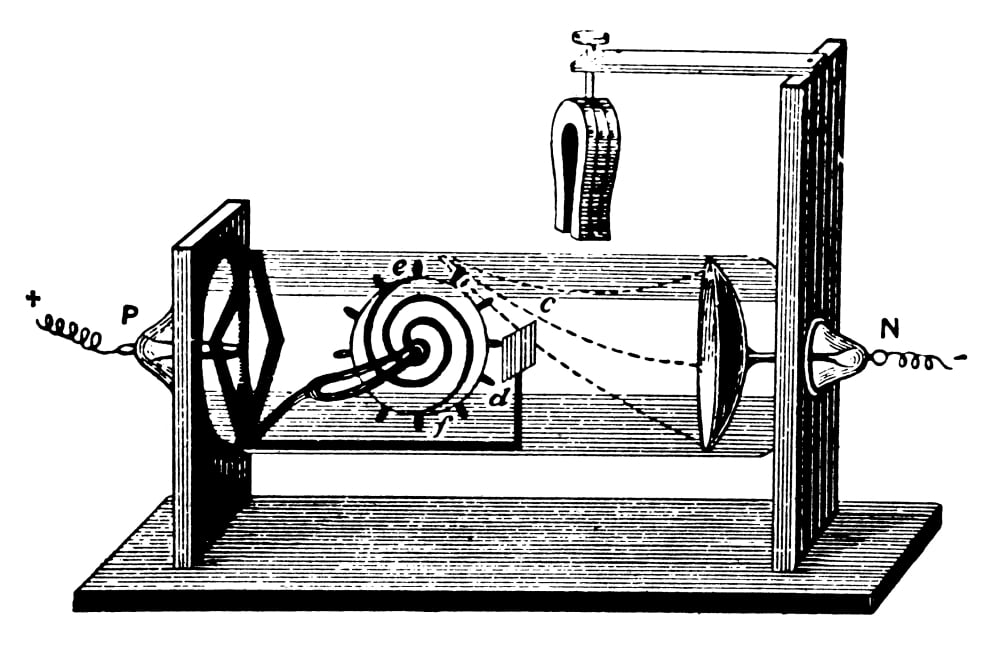

- Explanation of cathode ray experiment nyu professional#
- Explanation of cathode ray experiment nyu series#
It requires knowledge in electrics/electronics and programming, and an in-depth understanding of each media category, technology and its preservation, documentation and digital preservation needs. I graduated from there in 2003.ĮCPN: Are there any particular skills that you feel are important or unique to your discipline?Ĭhristine Frohnert CF: A complex range of skill sets are needed, which should be solidly grounded in the conceptual framework of contemporary art conservation as a whole. I became fascinated with TBM, and I learned about the newly established program ‘Conservation of Modern Materials and Media’ at the University of Arts, Berne, Switzerland. About 20 years ago, I realized that technology-based artworks can be seriously harmed or lost without a new conservation specialty being established. As many TBM art collecting institutions are facing rapidly increasing needs to adequately acquire, preserve, exhibit and store TBM works, we are responding to this development and our work is more geared towards long-term collection care and the development of preservation plans, as well as education.ĮCPN: How were you first introduced to conservation, what contributed to your decision to specialize in time-based media, and why has been your training pathway?ĬF: As with most of my colleagues, I started conservation being exposed to more traditional media such as paintings and sculpture. institutions without time-based media conservators on staff, as well as for collectors and artists. However, over the last several years, we have experienced a rising demand to serve as consultants for different U.S. Since the studio’s inauguration, we have responded to individual needs for both TBM conservation treatments and consulting requests. We are both German, have been trained in Europe, worked in leading positions in museums, and have been involved in international research projects.īek and I focus on the conservation of artworks with a durational element in our practice-such as sound, moving image, performance, light, or movement, that unfolds to the viewer over time via slide, film, video, software, or the internet. Reinhard Bek and I founded Bek & Frohnert LLC in NYC in 2012- a conservation studio in private practice specializing in the conservation of time-based media (TBM). In 2012, she was named the inaugural Judith Praska Distinguished Visiting Professor in Conservation and Technical Studies at the Conservation Center at the Institute of Fine Arts, New York University (CC/IFA/NYU), where she now serves as the Time-based Media Art Conservation Curriculum Development Program Coordinator.Ĭhristine Frohnert and Reinhard Bek ECPN: Please tell us a little bit about yourself and your current position.Ĭhristine Frohnert (CF): I am a conservator of contemporary art with a specific focus on technology-based art. Prior to establishing a private practice for Time-based Media (TBM) with colleague Reinhard Bek, Christine served as chief conservator at the Museum Ludwig in Cologne, Germany for twelve years and as chair of the AIC Electronic Media Group from 2008-2012. In this interview, we hear from Christine Frohnert, a conservator who graduated in 2003 from the University of Arts in Berne, Switzerland, where she majored in the Conservation of Modern Materials and Media. In the first interviews for this series, we spoke with emerging conservators starting in the early stages of their careers working in time-based media, which included Alexandra Nichols, Nicholas Kaplan, Brian Castriota and Yasmin Desssem.

Explanation of cathode ray experiment nyu professional#
We’ve asked our interviewees to share some thoughts about their career paths, which we hope will inspire new conservation professionals and provide valuable insight into these areas of our professional field. These conservators work with time-based media, which is characterized by artwork with durational elements, such as slide, film, and video, analog or born-digital materials, performance, light or kinetic art, sound or software-based art.
Explanation of cathode ray experiment nyu series#
We kicked off the series with Chinese and Japanese Painting conservation, and now we are focusing on Electronic Media Conservation (EMG). To promote awareness and a clearer understanding of different pathways into specializations that require particular training, The Emerging Conservation Professionals Network (ECPN) is conducting a series of interviews with conservation professionals in these specialties.


 0 kommentar(er)
0 kommentar(er)
